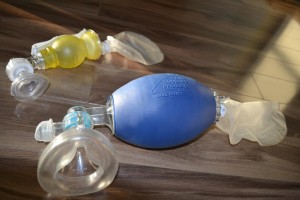CPR training has become quite popular in the US because of awareness-raising on cardiac disease. Because ischemic heart disease, the number one killer of Americans today, is caused by lifestyle risk factors, health education has never been more important. The complications of such a condition are severe – ending in cardiac arrest from a heart attack.
But what is a heart attack?

A heart attack happens when there is a sudden halt of blood that is delivered to the heart. This can be due to an obstruction or vasoconstriction. Obstructions are the most common cause of a heart attack, from a condition called coronary artery disease (CAD). This happens when plaque – a build-up of fat and inflammatory cells – is deposited in the arteries that supply the heart muscle with blood. This is a gradual process, with the victim exhibiting or feeling signs and symptoms of a heart condition prior to the attack.
Vasoconstriction is a sudden event, usually something that happens without warning. Though there are no specific causes that have been discovered to contribute to vasoconstriction, hypertension and certain medications and hormones have been studied to mimic the body’s vasoconstrictive effects. When the arteries that supply the heart with blood suddenly constrict, the oxygen supply to the heart gets cut off, causing a heart attack.
CPR core skills
In basic and advanced courses, there are three skills we teach our trainees: compression, ventilation, and defibrillation. If you perform bystander CPR, the most you will probably do is the first two skills. The last skill, defibrillation, needs an AED to supply the electric shock that is sent to the heart. AEDs are typically only available if the first reponders are EMTs (emergency medical technicians).
Compressions and ventilations are given in repeated cycles until the victim is brought to an ER or medical help arrives. One cycle is made up of 30 compressions followed by 2 rescue breaths. Rescue breaths may be given mouth-to-mouth (preferably with a barrier device such as breathing mask) or with a bag valve mask. Bag valve masks are made up of a breathing mask that is connected to a pump that is squeezed manually to give each breath.
CPR training programs
At San Francisco CPR, you can choose from five training programs and three re-certification programs. We only require our trainees to have complete attendance and to pass the post-test before we can award them with a CPR training credential. Credentials are only valid for 24 months before the trainee has to renew it (through a re-certification class).
Basic Life Support CPR training
- Basic CPR and AED (Heartsaver) – 4 hours
- Basic CPR and AED for HCPs (Heartsaver C) – 4.5 hours
- Basic Life Support for HCPs – 4.5 hours (re-certification: 4 hours)
Advanced Life Support CPR training
- Advanced Cardiac Life Support (ACLS) – 16 hours (re-certification: 6 hours)
- Pediatric Advanced Life Support (PALS) – 14 hours (re-certification: 8 hours and 20 minutes)
